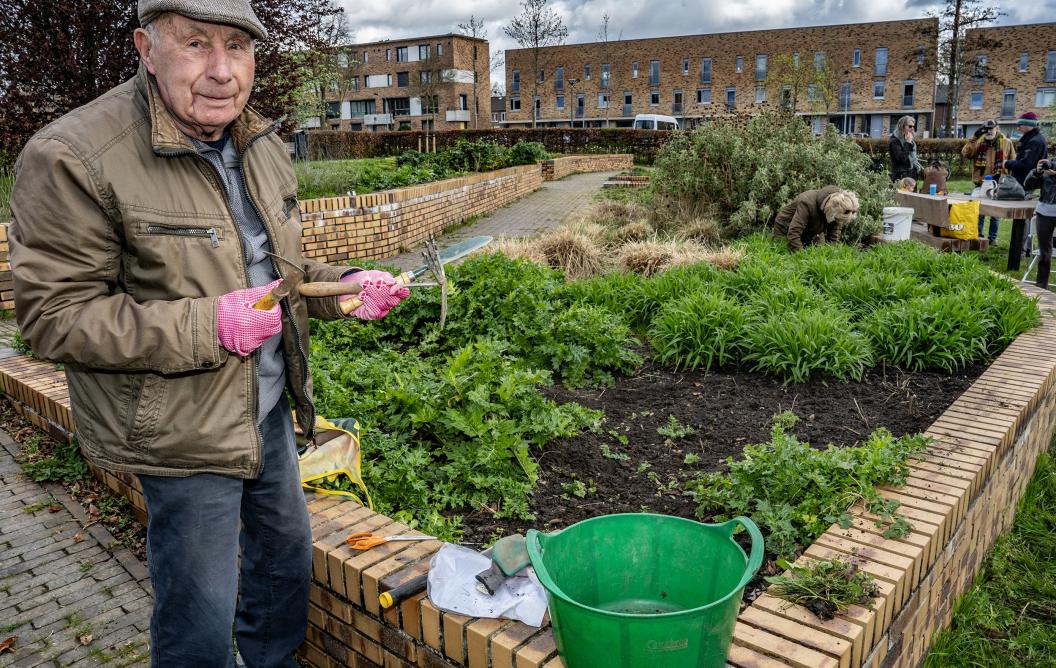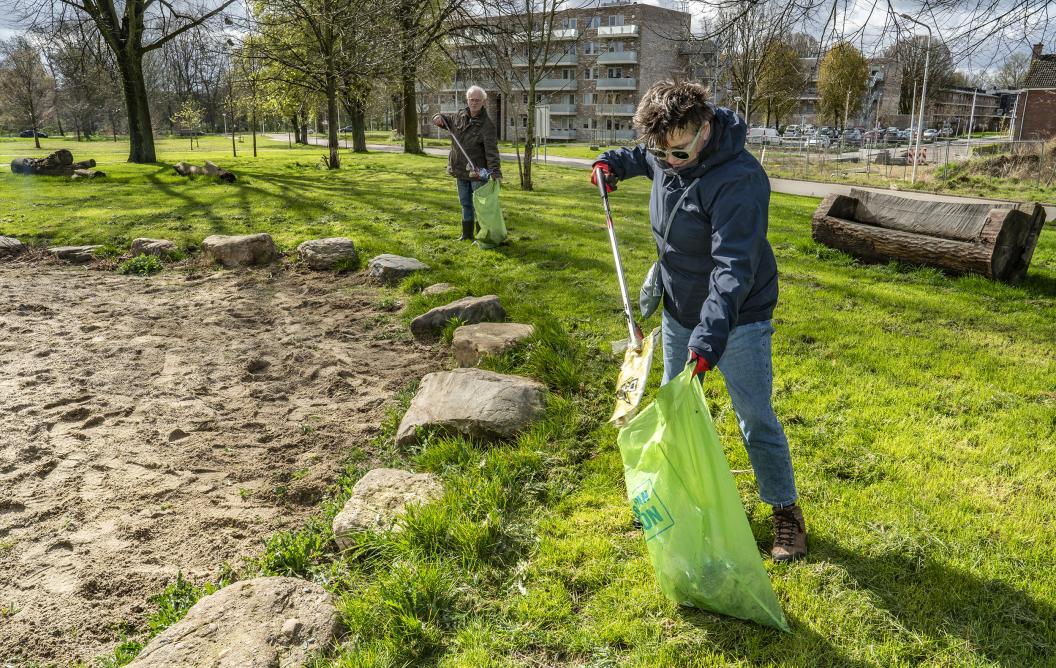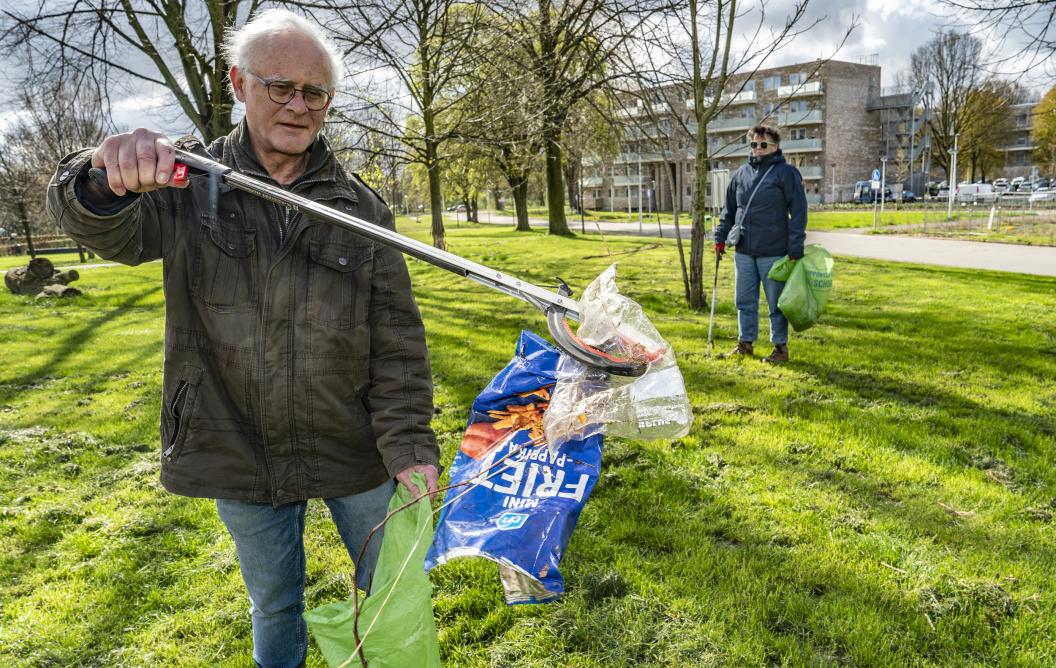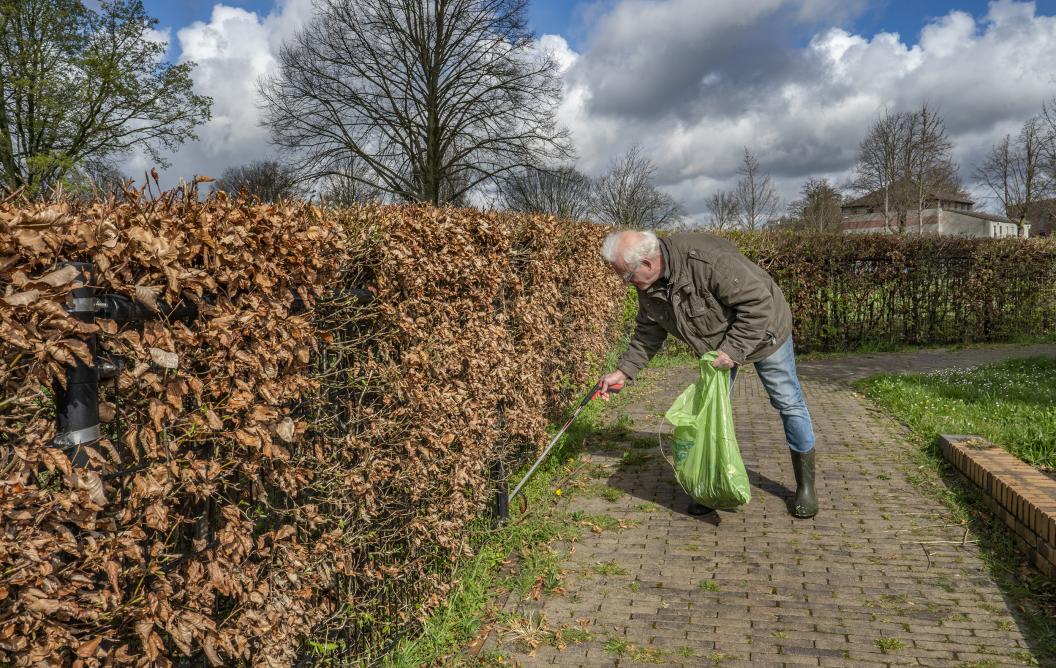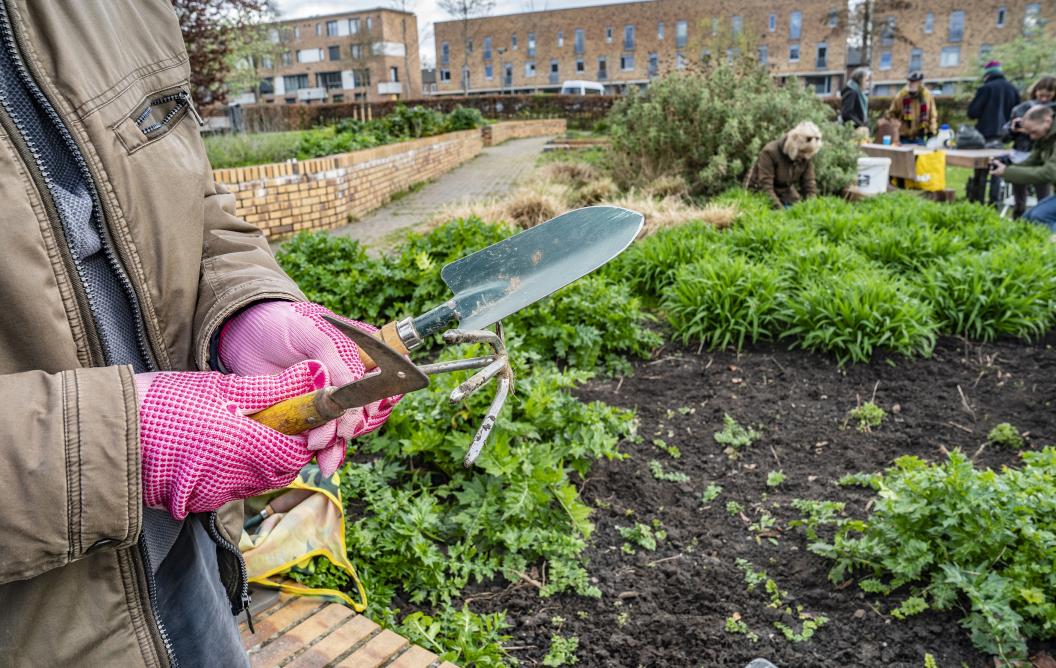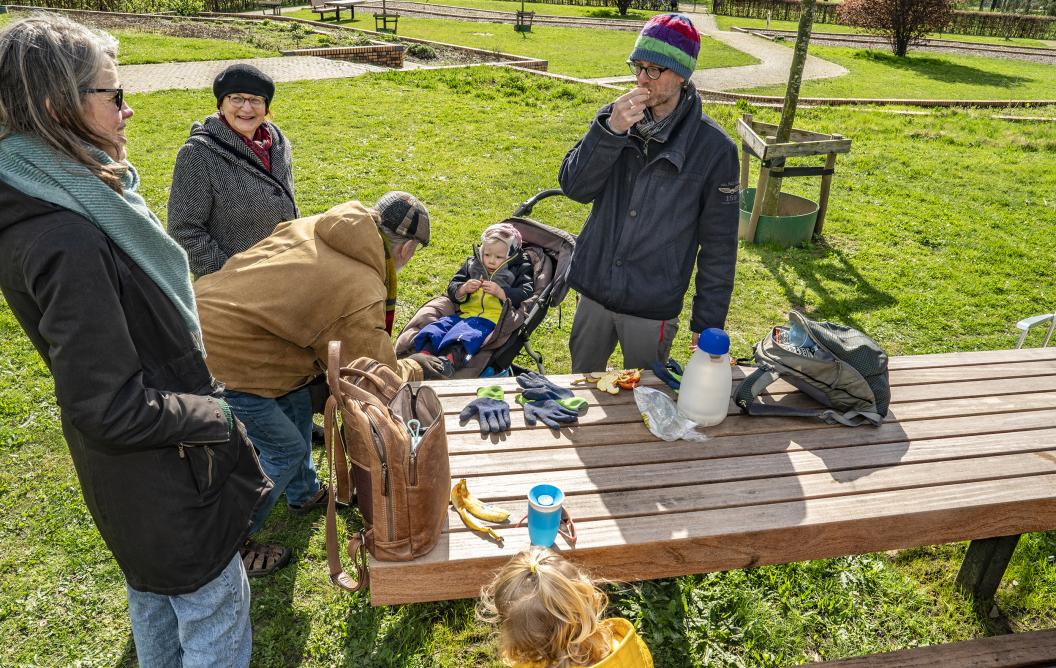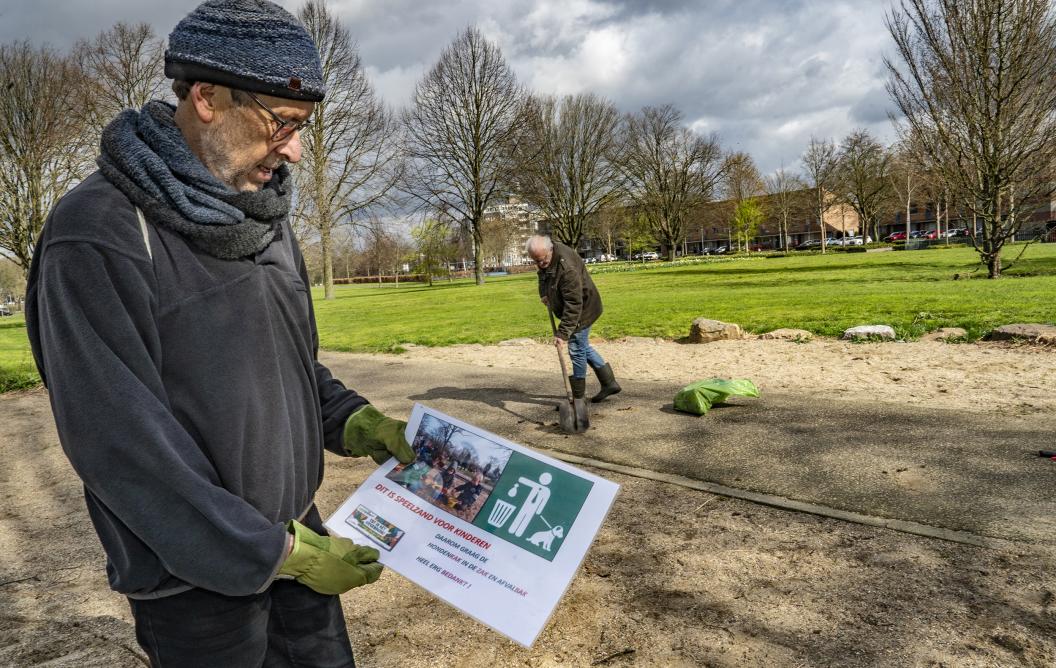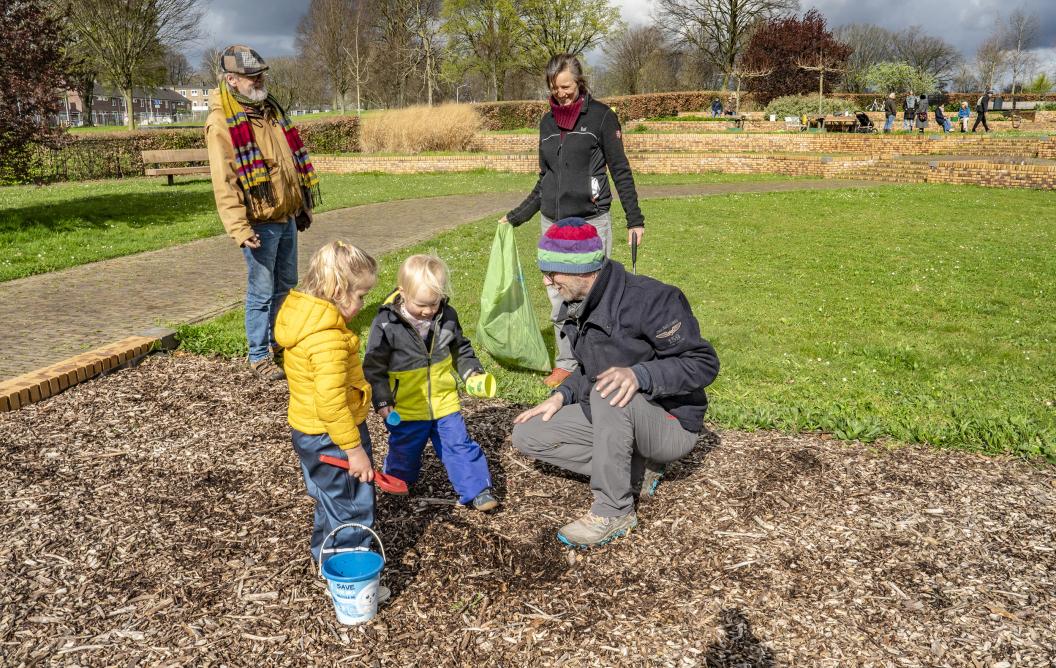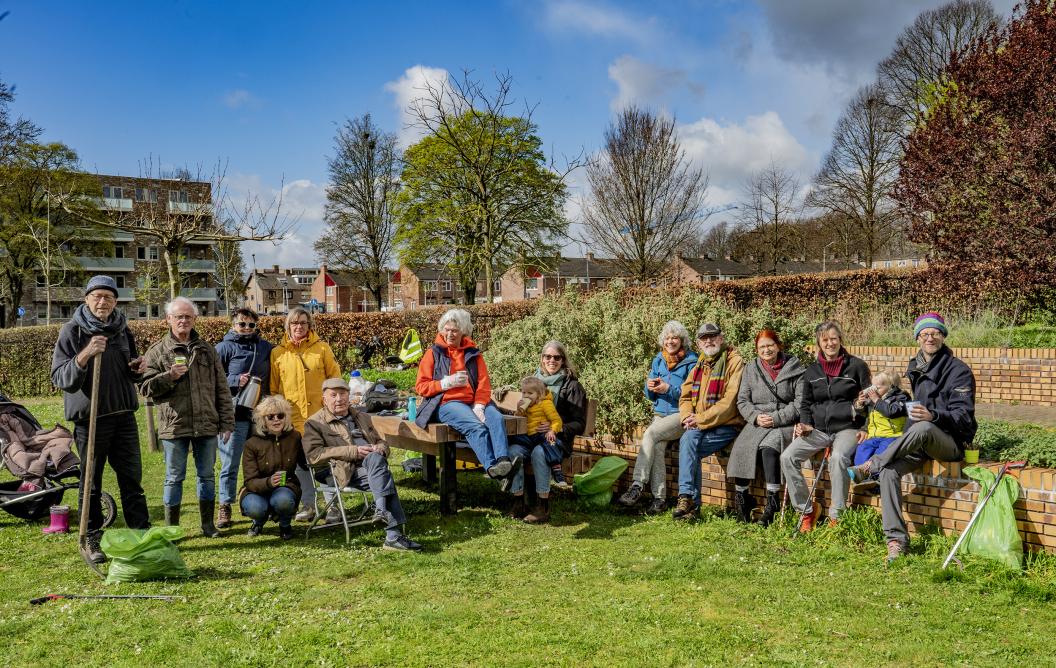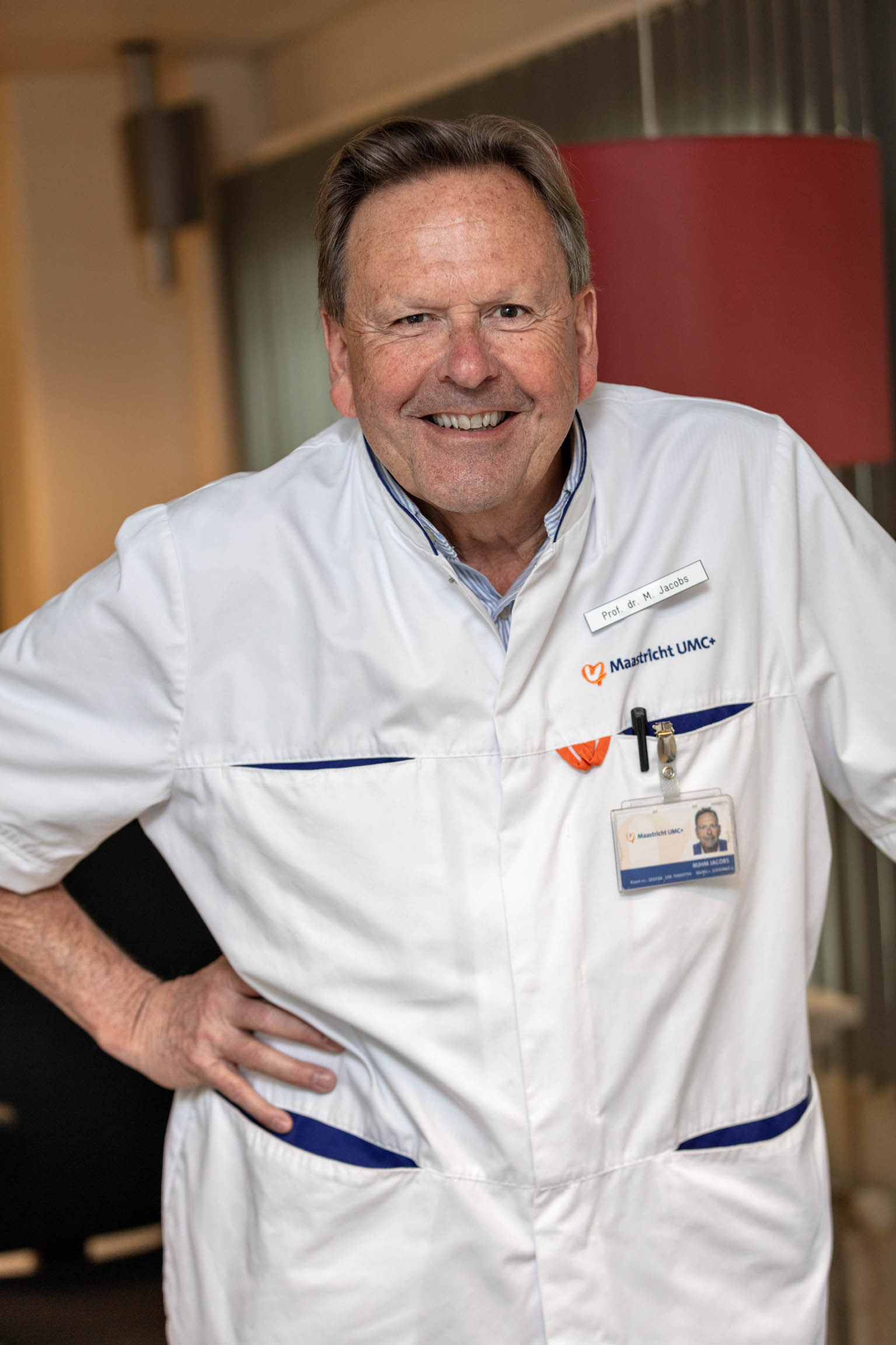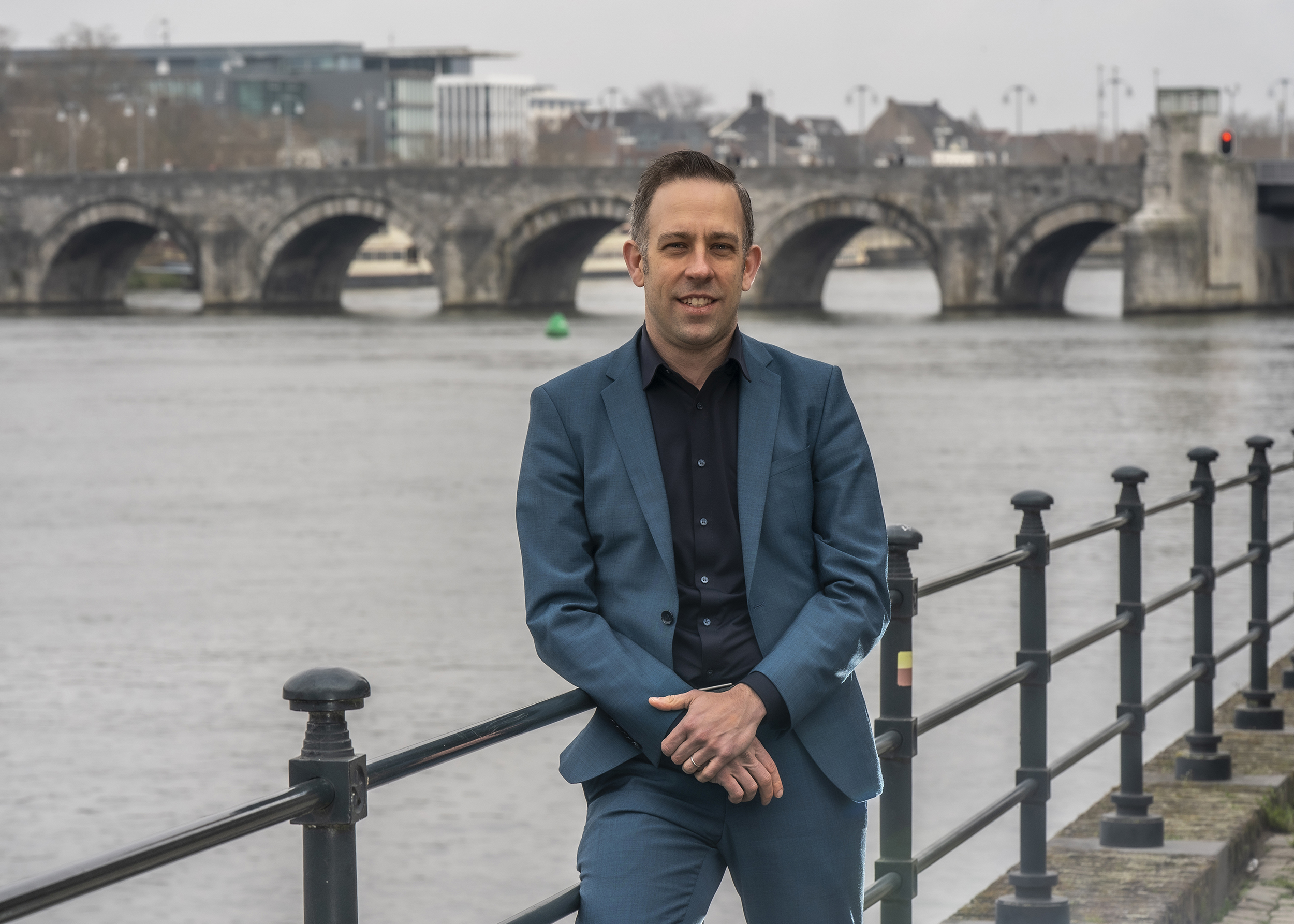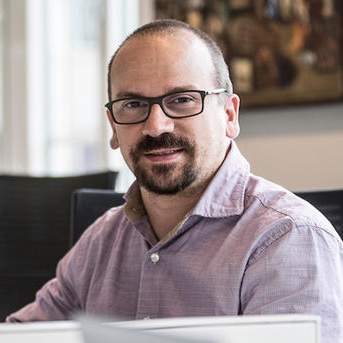GREENER TOGETHER: More meeting places and greenery in the neighbourhood
After a sunny start to spring, the weather on this third Saturday in March is a disappointing 10 degrees Celsius, if that. Not that this dampens the enthusiasm of the gardening volunteers from SamenGroenerMaastricht, a foundation aimed at making neighbourhoods greener and promoting social interaction. As they do every Saturday morning, the volunteers are rolling up their sleeves in the Viegenpark in northwestern Maastricht, between the Caberg and Malpertuis districts.
The turnout is slightly higher than usual today, probably because of the special litter-picking campaign. After a warm greeting and a brief exchange of the latest news from the park, everyone grabs their tools or a litter picker and bag and gets to work. “Litter picking is not something we do every week,” says Igo Gorissen. “We usually meet every Tuesday and Saturday morning with a set group of volunteers and work in the garden. But once in a while, we do litter picking as well. Lots of local residents tend to sign up, which is nice to see. Unfortunately, it’s sorely needed.”
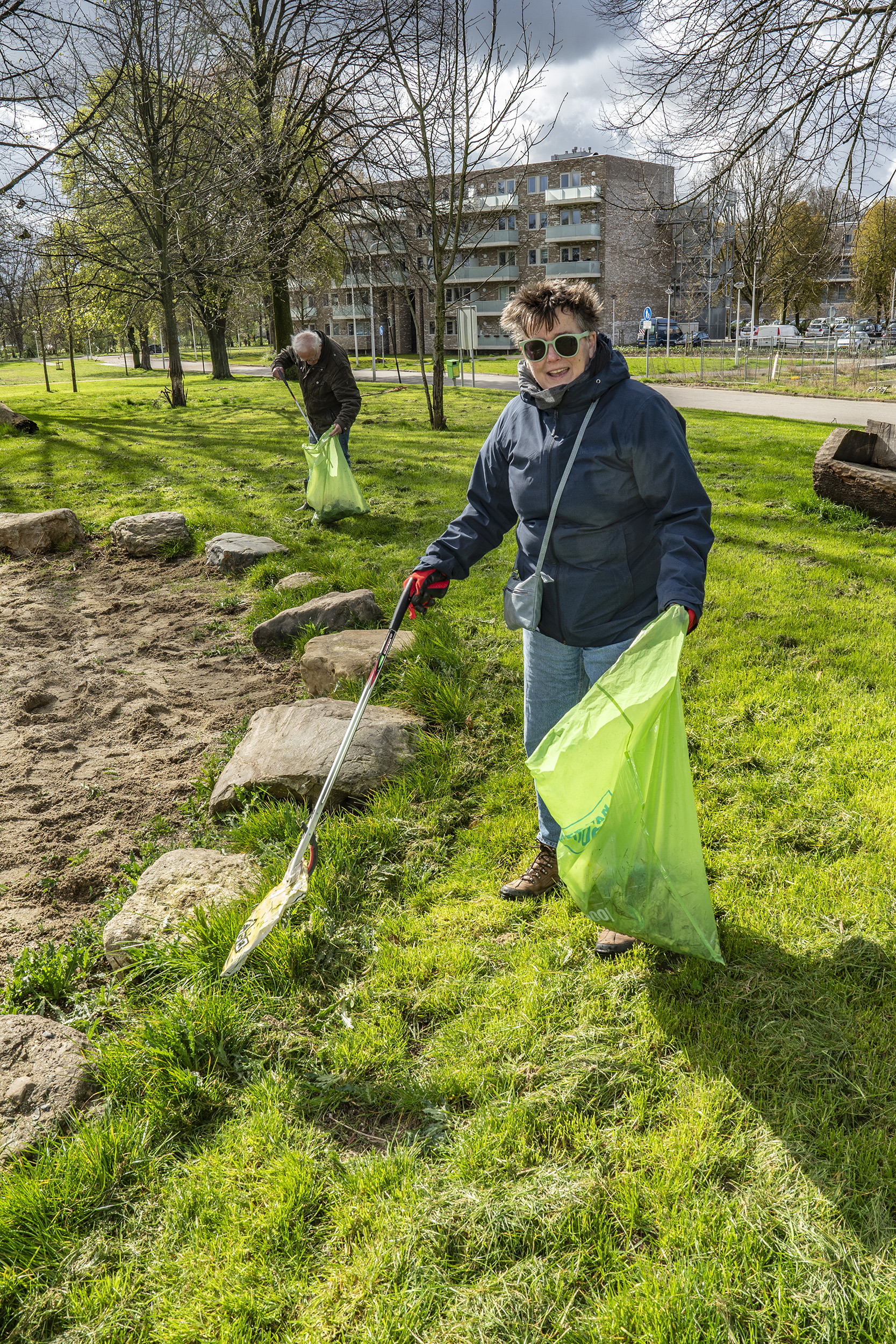
Klasien Horstman and SamenGroenerMaastricht make neighbourhoods greener and promote social interaction.
Getting together in nature
Local resident Igo is one of the founders of SamenGroenerMaastricht, and has been involved in neighbourhood activities since the early days. “I attended the citizens’ summit in 2015. There was a lot of discussion of the quality of life in Maastricht’s low-income neighbourhoods, and one thing that came to the fore was that people miss opportunities for social interaction. I wanted to help improve that. And personally, I was hoping for a greener neighbourhood. As it turns out, those two things go well together.”
Maastricht University philosopher Klasien Horstman had the same idea. As part of her research on healthy neighbourhoods, she worked with the municipality to organise the citizens’ summit in northwest Maastricht. She, too, picked up on the fact that the removal of public meeting places is a key cause of social poverty, a topic often referenced in discussions of low-income neighbourhoods. To broaden her research and contribute to the creation of more local meeting places, she decided to get more involved with the neighbourhood herself.
I love working in nature like this, seeing some of the same faces every week and working together to turn the place into something beautiful.
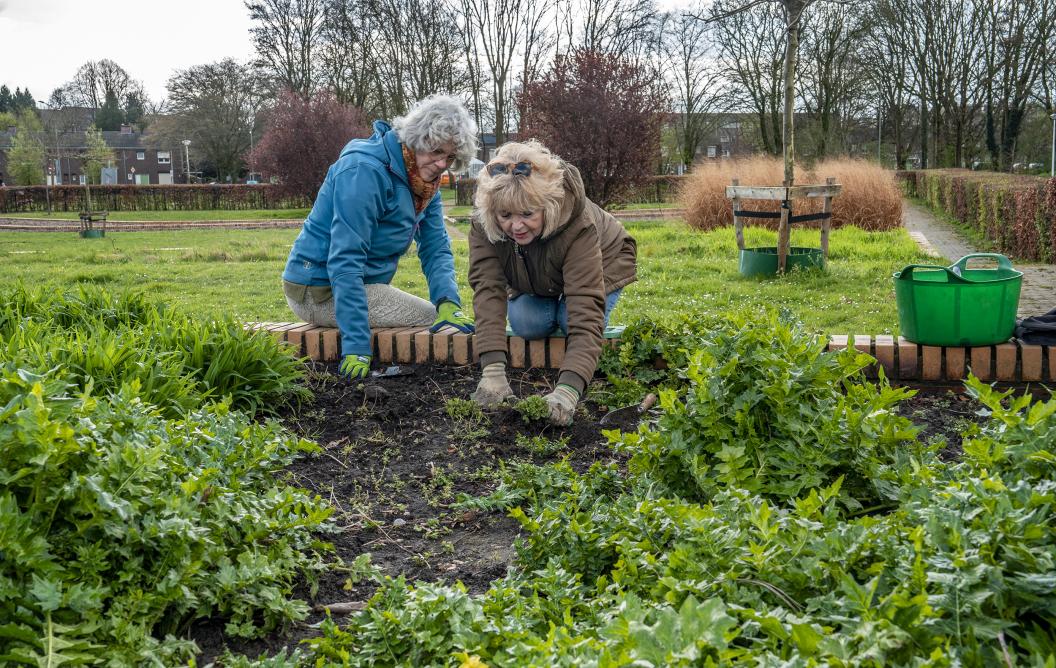
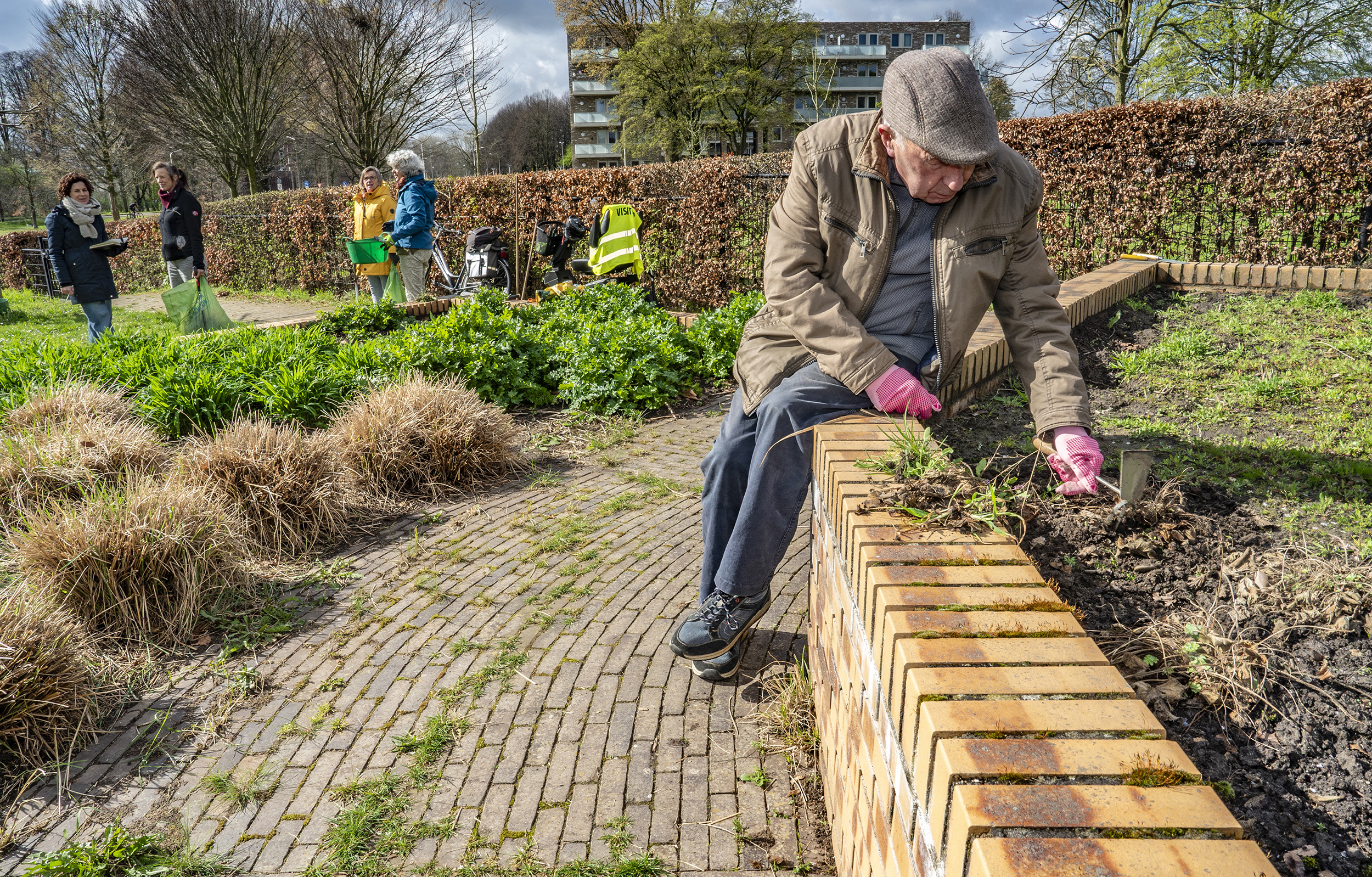
UM in the neighbourhood
What arose was close partnership between the neighbourhood and university—even if volunteers and residents are not always aware of it, Klasien says. “Where necessary, we communicate that we’re also conducting research; we’re transparent about that. But we’re mainly here to contribute our knowledge and expertise, to help brainstorm where we can. Besides, it gives us the opportunity to give something back to the neighbourhood, by rolling up our sleeves and joining in, like today.”
“And it’s useful,” Ine Orbons adds. “Having UM’s support makes it easier for us, as a small foundation, to get things done with the municipality and other authorities. It also helps that Klasien has a large network and can put us in touch with the right people.” Ine is another volunteer who has been involved from the outset. “During the pandemic, I was walking through the park with a friend when I noticed the garden for the first time. At the time, it looked quite neglected. I got curious and looked it up, which is how I found Igo and the SamenGroener foundation. I started as a volunteer, and have spent Tuesday and Saturday mornings here ever since. I love working in nature like this, but also seeing some of the same faces here every week, working together to turn the place into something beautiful.”
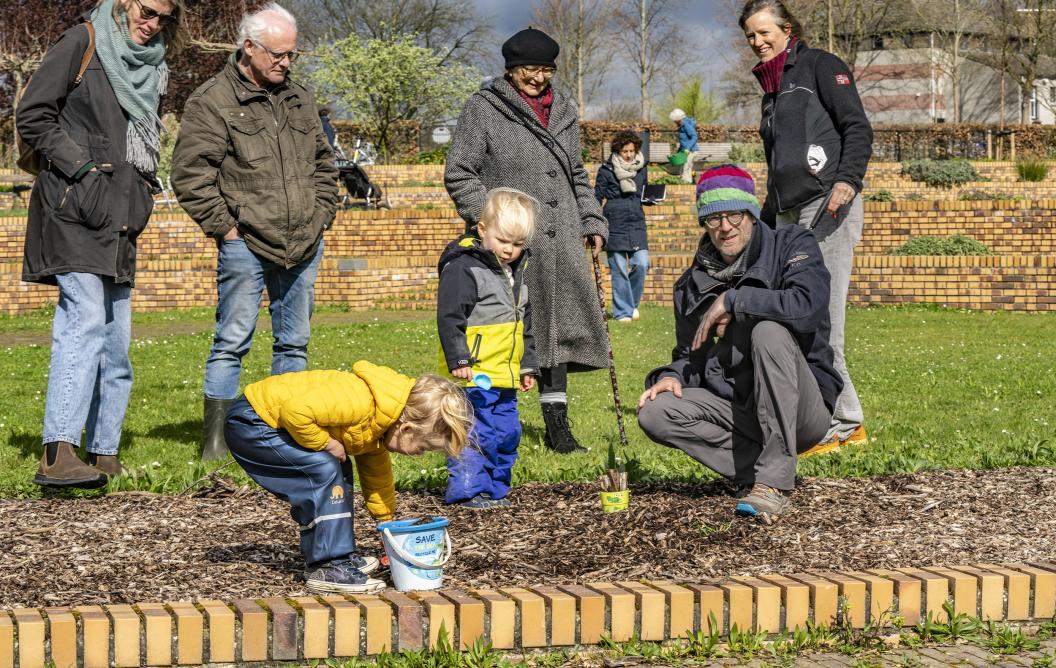
And they seem to have succeeded: thanks to the volunteers, the garden is once more in good shape. Still, plenty of work remains. “Especially now that the winter has passed.” Ine points to a recently planted herb garden and the iron construction at the entrance to the garden. “We want to get plants to grow over it so it’s beautifully cloaked in green.”
A little later, Henk arrives on his mobility scooter. At 92, he is the oldest member of the gardening group. He joined after his wife passed away, and enjoys being outdoors and among people, while also contributing to the neighbourhood. Henk’s advanced age makes him no less active or involved. He takes out his knee pad and tools, climbs off his scooter and plunges his hands into the plant beds. In the meantime, he chats with Bernadette and Toos, volunteers who have put down their litter pickers and are now tackling the weeds.
Green thumb: optional
“I moved here from Veldwezelt in Belgium a year and a half ago. My flat has a view of the park and garden, and I thought it would be nice to start a group here,” Bernadette says. “I’m retired and was looking for ways of meeting people. When I saw people working in the garden, I came over to take a look and found that a gardening group already existed. I signed up immediately. I’m glad for this contact with nature now that I don’t have a garden of my own.”
Does one need a ‘green thumb’ to get involved? “Not at all!” Toos exclaims. “It’s useful if you know something about gardening, but if you don’t, there are plenty of others who can help. I’ve learnt a lot of new things in the last few years.” Toos, too, wanted a retirement activity that would bring her into contact with nature, and stumbled across the garden while out walking during the pandemic. “You tend to head towards the city, but now I’ve discovered a lot of great things to do close by, in my own neighbourhood.”
Creating opportunities for people to get together in the neighbourhood, and creating more green spaces at the same time—these are two things that go well together. I’m happy to be able to contribute.
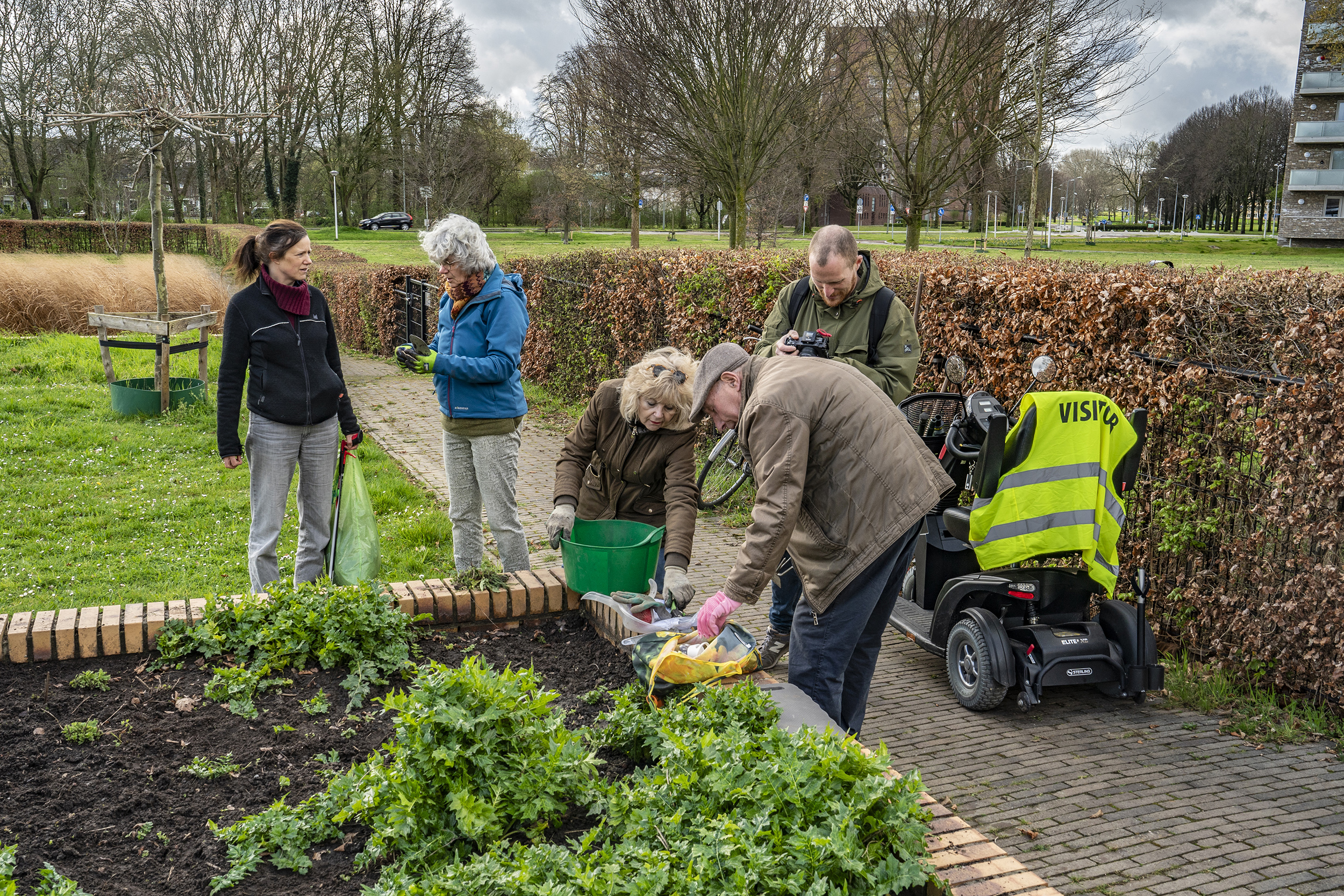
Coffee and treats
A morning of ‘SamenGroener’ always ends with coffee and treats at a large picnic table in the garden. The tables were installed recently by the municipality, and are, Ine says, a welcome addition. “You can see that the tables and benches encourage people to drop by and stay for a chat. Which is exactly what this place is meant for—after all, the gates to the garden are open to everybody.”
Versterking
The sun has come out after all. Satisfied with their morning’s work, the volunteers return their gardening tools to their bicycle bags. “Running water, electricity and a place to store tools; those are still high on our wish list,” Klasien says. “At the moment, we have to carry supplies back and forth with us. Also water, if we have to use more of it when the weather warms up; that’s quite a task. There’s still work to be done and a lot of maintenance involved, but the garden is looking good now. I’m proud of what we’ve achieved here in the last few years.”
Reinforcements are always welcome, but the group is not actively seeking more volunteers. “I want people to know that this place exists, but whether they participate is up to them. We can’t and won’t force anybody. Everyone is welcome to come and take a look or help out for a morning. My guess is that whoever does will end up sticking around!”
You tend to head towards the city, but now I’ve discovered a lot of great things to do close by, in my own neighbourhood.
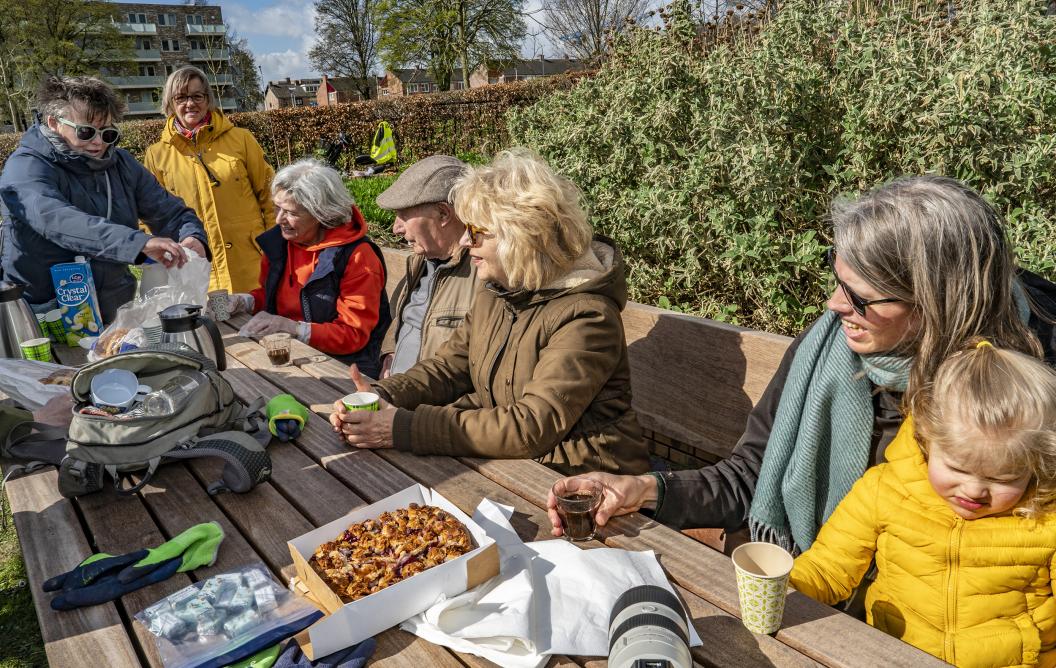
Click on the icon to watch all photos
Text: Sanne Tummers
Photography: Harry Heuts
Also read
-
The surgeon who, defeated, leaves the operating room after hours of surgery, to tell the relatives that, unfortunately, the patient did not make it. This role, which most people only know from films and TV series, was one that vascular surgeon Michael Jacobs had to play more often in his career than...
-
Maastricht, Seattle, London, The Hague, Brussels, Maastricht: his career has taken a roundabout route so far. But for Davy Pieters (41), returning ‘home’ after an international career felt like coming full circle.
-
Having won the prestigious Perspectief grant, the MERLN-led FAB4FUTURE project develops a toolbox for the scalable production of stem cell-based tissue for medical purposes and cultured meat. Project leader Lorenzo Moroni and principal investigator Matt Baker on the creative synergy addressing weak...
- in Featured
